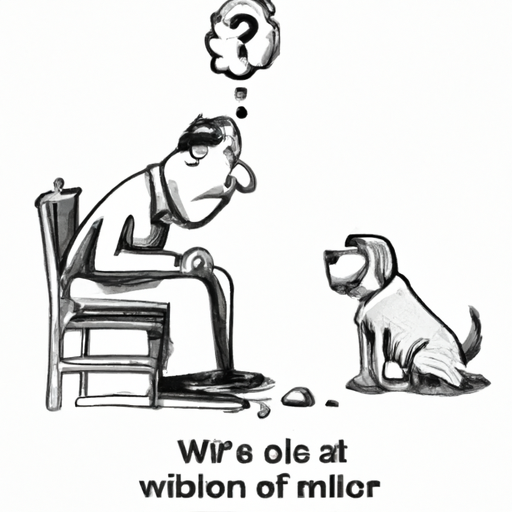As a caregiver, you know that your dog is more than just a pet – they’re a part of your family. It’s natural to worry when your furry friend isn’t feeling their best. If your dog is vomiting yellow, it’s important to understand what’s happening and how you can help.
1. Understanding the Basics
Vomiting, in general, is a common symptom among dogs. It can be caused by various factors ranging from dietary issues to serious health conditions. But when the vomit is yellow, it’s usually a sign that your dog is vomiting bile. Bile is a fluid that aids in digestion, produced by the liver and stored in the gallbladder. It’s released into the small intestine to help break down fats and remove waste products.
There are several reasons why your dog might vomit bile:
- Empty Stomach: Dogs often vomit bile in the morning or late at night when their stomachs have been empty for a long time. This is because the bile isn’t being used for digestion and irritates the stomach lining.
- Dietary Issues: Consuming too much fatty food or a sudden change in diet can result in bile vomiting.
- Health Conditions: Bile vomiting can also be a symptom of more serious conditions such as pancreatitis, gastrointestinal diseases, or liver diseases.
Table 1.1: Possible causes of yellow vomiting in dogs
| Cause | Explanation |
|---|---|
| Empty Stomach | Bile irritates the stomach lining when it’s empty for a long time. |
| Dietary Issues | Too much fatty food or sudden diet change can result in bile vomiting. |
| Health Conditions | Pancreatitis, gastrointestinal diseases, or liver diseases can cause bile vomiting. |
2. Recognizing the Signs
Besides the obvious sign of yellow vomit, there are several other symptoms that might accompany this condition. Your dog may exhibit lethargy, loss of appetite, diarrhea, or abdominal discomfort. It’s crucial to pay attention to these signs and consult a veterinarian if they persist.
3. What to Do When Your Dog Vomits Yellow
If your dog vomits once but otherwise seems okay, it might not be cause for concern. However, repeated vomiting is a sign that you should seek veterinary attention. Here’s what you can do:
- Monitor Your Dog: Keep a close eye on your pet’s behavior and symptoms. Track how often the vomiting occurs and note any other changes in their behavior or physical condition.
- Keep Them Hydrated: Vomiting can lead to dehydration, so ensure your pet has access to fresh water at all times.
- Consult a Veterinarian: If the vomiting continues, or if your dog displays other concerning symptoms, it’s time to see a vet. They can diagnose the cause and provide the appropriate treatment.
4. Prevention and Care
Preventing yellow vomiting largely depends on its cause. If it’s due to an empty stomach, try feeding your dog smaller meals more frequently. If dietary issues are the culprit, consider a diet change under the guidance of a vet. Regular vet check-ups can also help detect and manage any underlying health conditions.
5. FAQs
Q: Is yellow vomit always a sign of illness in dogs?
A: Not necessarily. Sometimes a dog might vomit yellow bile simply because their stomach is empty.
Q: Should I take my dog to the vet every time they vomit yellow?
A: If it’s a one-time occurrence and your dog is otherwise healthy, it might not be necessary. However, repeated instances or additional symptoms warrant a veterinary visit.
Q: Can I give my dog medication to stop the vomiting?
A: You should always consult a vet before giving your dog any medication. Some human medications can be harmful to dogs.
Remember, as a caregiver, your vigilance plays a key role in your dog’s health. Understanding what it means when dogs vomit yellow is an important part of ensuring their well-being. Always consult a professional if you’re unsure – they’re there to help you and your furry family member.



